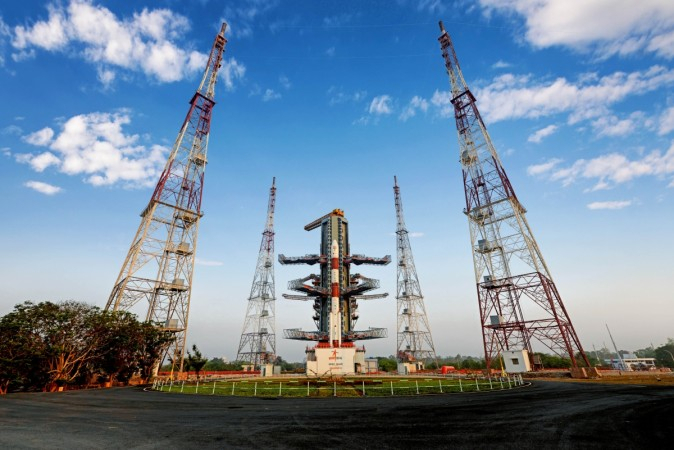
The Indian Space Research Organisation (ISRO) has begun final checks for the historic launch of Chandrayaan-2, India's second expedition to the moon, early on Monday morning, this time to explore the dark side of the moon that faces away from the earth, media reports say.
The Geosynchronous Satellite Launch Vehicle (GSLV) MkIII, Isro's most powerful launcher yet, will carry the lunar probe to the orbit from the second launch pad of the Satish Dhawan Space Centre in Sriharikota in coastal Andhra.
"Geosynchronous Satellite Launch Vehicle Mark-III carrying Chandrayaan-2 spacecraft is undergoing launch checks at the launch pad in Sriharikota. The launch is scheduled at 2:51 am on July 15," Isro said in a statement.
Watch Sri P Kunnikrishnan, Director URSC, ISRO talk about the complexities and challenges in developing Chandrayaan 2, the most advanced spacecraft by India yet - https://t.co/kNpFGlXjOn#RocketScience pic.twitter.com/V7GMtmJfjA
— ISRO (@isro) July 11, 2019
Isro's lander is expected to land on the moon on September 6 or 7 after a journey that could last more than 50 days. "In future, the nation will depend more on planetary missions. After the Chandrayaan-1 mission, we are now entering into Chandrayaan-2 mission. We had slipped many times but now it will be launched on July 15 at 2:51 am," Isro Chairman K Sivan said.
Chandrayaan-2's landing site is about 70 degrees south latitude of the moon, which is the southern-most location for any mission until now.
Here is a compilation of all the hard facts and juicy tidbits that you wanted to know about this first-of-its-kind mission:
- Chandrayaan-2 follows Isro's successful Chandrayaan-1 expedition that was launched aboard Polar Satellite Launch Vehicle (PSLV-XL) C-11 on October 22, 2008, and was in operation until August 2009.
- Chandrayaan-2 will be launched aboard GSLV Mk-III, Isro's most powerful launcher yet.
- The 640-tonne GSLV Mk-III stands 43.3 metres tall and carry a payload of 8 tonnes to the low earth orbit (LEO) or 4 tonnes to the geosynchronous transfer orbit (GTO).
- GSLV Mk-III is a three-stage launcher with a solid-fuel first stage, liquid-fuel second stage and a cryogenic third stage.
- The 3.8-tonne Chandrayaan-2 is safely locked away inside the nose cone of the launcher and is called composite as it includes the lander Vikram (in memory or Vikram Sarabhai, the father of Indian space programme) and rover Pragyaan (Sanskrit for wisdom).
- While the lander Vikram has been built by the Russian Federal Space Agency, Pragyaan has been developed by Isro.
- India is set to become only the fourth nation after the US, Russia and China to make a soft lunar landing when Vikram touches down on the lunar surface.
What makes the GSLV Mk-III India’s most capable launch vehicle to date? S Somnath, Director of the Vikram Space Centre in Thiruvananthapuram, gives us the answer in this episode of #RocketScience - https://t.co/33e7tOmcwM pic.twitter.com/pRuhyL9pv0
— ISRO (@isro) July 10, 2019
- The launcher will place Chandrayaan-2 on an earth-centric elliptical orbit of 170 km perigee (nearest point to the earth) and 40,400 km apogee (the farthest point).
- Chandrayaan-2 will be launched to a moon-centric orbit through a series of manoeuvres by remotely firing its motors and placed on an orbit at a 100km altitude from the lunar surface.
- The 1,444kg lander will separate from the orbiter and softly land on the lunar surface on its own propulsion provided by its motors and will release the rover once it has landed.
- Pragyaan, the rover, that moves on six wheels will cover 500 metres of the lunar surface at the rate of 1 centimetre per second, performing chemical analysis and sending the data to the lander. The lander will relay the data it to the Earth station.
- The orbiter will have an additional experimental payload that will collect data and relay back to the Earth.









